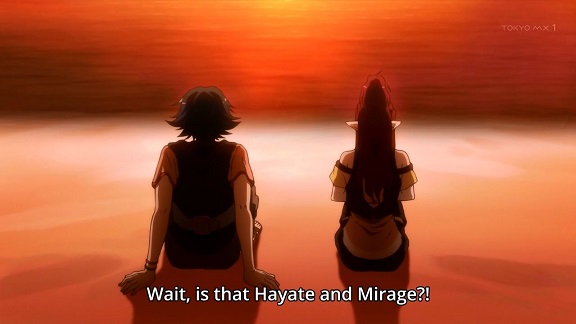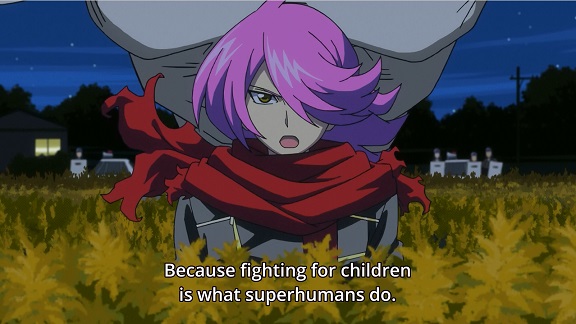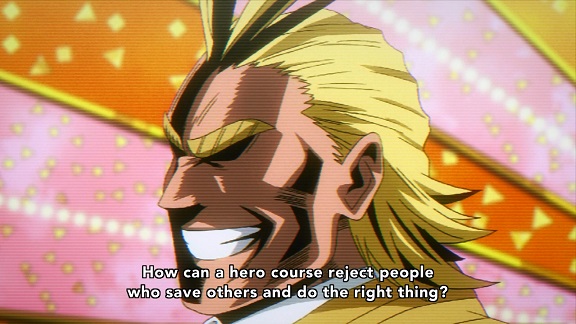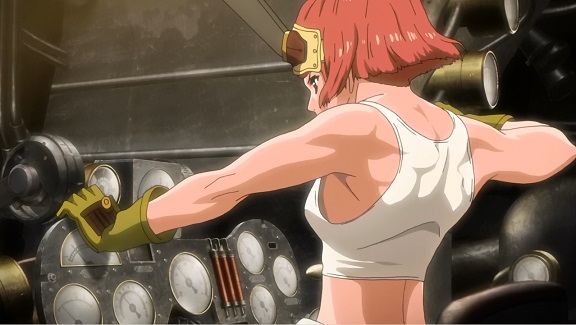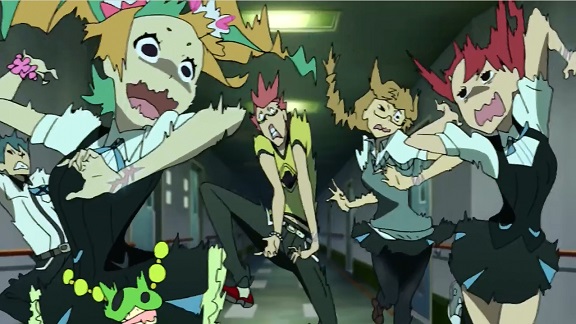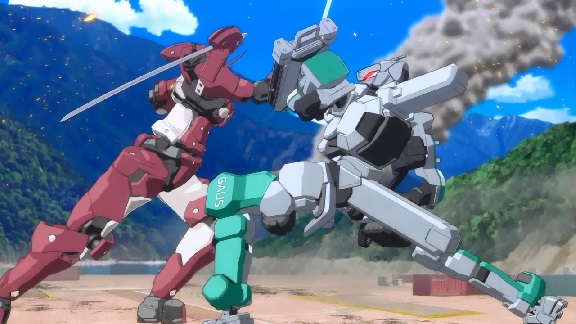
2016 was a pretty decent year for mecha anime. We got several Gundam series and specials of course, but also the latest Macross installment, a glimpse at the upcoming Patlabor reboot as well as several new mecha series. Of those, Active Raid (police in powered suits) and Schwarzenmarken (East German robots fighting off an alien invasion in 1983) were pretty meh while Bubuki Buranki (five kids combine to form a super robot and fight a worldwide conspiracy) redeemed itself with its second season. But the series that impressed me the most this year were Kuromukuro and Regalia: The Three Sacred Stars.
To start with Regalia, this is what you might call a super robot show, with immortal lolis piloting giant magical mecha fighting an immortal shota piloting an even bigger magical mecha. It started off well, but then ran into production problems and instead of finishing its run in Summer, was instead reran this Fall season. Perhaps that’s why it got relatively little attention. Which is a shame, because this was quite a nice, if simple series. What’s more it’s mecha fights are 2-D animated, a rarity in modern mecha series, as most are now CGI, like Kuromukuro.
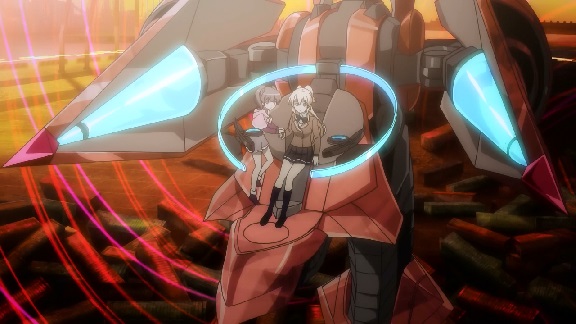
The story revolves around Yuinshiel “Yui” Asteria and her adopted sister Rena Asteria. Yui is actually the empress of Enastoria but for the most part lives like an average school girl. When a giant robot pops up to kidnap Rena, Yui discovers that her loli sister is actually the soul of a magical mecha herself and she needs her to fight together. From there on several other Regalia pairs pop up, some friendly, some not so much as Yui’s country is put under siege and the disaster that happened to a neighbouring country twelve years ago threatens to repeat in Enastoria. Throughout the series emphasises the importance of family and female friendship as counterweight to the very masculine sort of power seeking of the male villain: Yui and Rena may be overpowered by him, but thanks to the friendships they make they still have a fighting chance. Not a new idea, but well executed here and always a pleasure to see among more cynical series.
Kuromukuro on the other hand is the story of a four hundred year old samurai and a modern school girl piloting a giant sword wielding mecha to fight off an alien invasion. This was everything you might want from a mecha series: great fights, good mecha designs, a decent plot that actually manages to answer most of the questions it raises, likeable characters, sword fights and gorgeous animation. But again, it got less attention than I expected. Perhaps because this was a Netflix exclusive and released in two thirteen episode batches at the end of the Spring and Summer seasons respesctively. In an age where every other series is streamed immediately after an episode is shown on Japanese television and anime fans have gotten used to discuss anime on a week by week basis, this may have hindered it from finding an audience.
Yukina Shirahane is visiting her mother, who is the director of a huge research lab looking into buried alien artifacts discovered sixty years ago, just when the lab comes under attack from a series of mecha. She finds herself being shot at by one of the mecha which had managed to enter the building she was in, only to be saved by a buck naked samurai she just freed from one of the artifacts. The samurai turns out to be Kennosuke Tokisada Ouma, whose last memories are of a battle over four hundred years ago. He thinks she is his clan’s princess and vows to protect her, while she is slightly flabbergasted by it all. Circumstances force them to pilot the Kuromukuro (“Black Relic”) together and because of this they’re drafted to fight against the invading alien mecha.

With twentysix episodes to play around in, Kuromukuro has the room to breathe and give some attention to the daily lives of its characters inbetween the battles. So of course Kennosuke transfers into Yukina’s class and hangs around with her friends. As Mage in a Barrell noted yesterday, the first half of episode one just follows Yukina on her daily routine before all hell breaks loose and the series repeatedly returns to the increasingly turned up side down familiarity of day to day life. Some scenes could just as easily have fit into any of P. A. Works other slice of life series. This gives it a charm that reminded me of e.g. Eureka Seven or Xam’d Lost Memories.
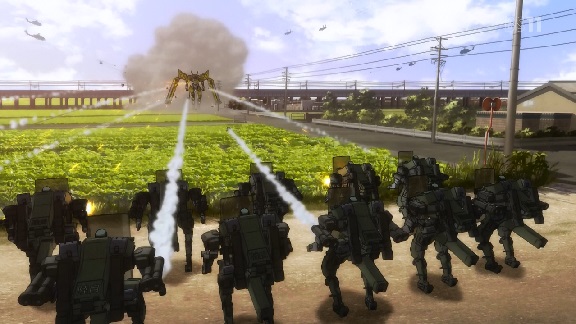
Nevertheless the real attraction is of course the mecha action and Kuromukuro doesn’t disappoint. For once the conventional military forces aren’t entirely useless in fighting robots. Though not up to facing the enemy’s super mecha, the smaller ones can be destroyed by tanks or the JSDF’s own mecha. It’s not just a series of showy one on one battles: both the invaders and the defending forces do have some sense of tactics. And while some of the ways in which the aliens fight make little sense at first and the same goes for their motivations, these questions are satisfactorily answered by the end of the series as is the question why if these are aliens, they look so damn human.
TL;DR: Kuromukuro is a great series you should check out if you like mecha, science fiction or samurai and if enough people do so we may get a second season.
This was day six of the Twelve Days of Anime. Next: let’s look at some short shorts.
